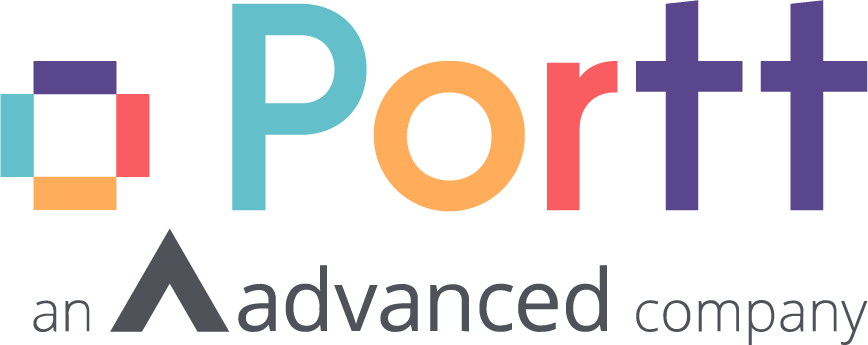
New data from the in-depth study of procurement leaders and professionals in the ANZ region, Future Focused Procurement – Forging Ahead in ANZ, highlights the importance of strategic procurement and identifies the five common roadblocks preventing procurement teams from living up to their strategic potential.
The importance of strategic procurement
Procurement teams, when given the opportunity, have the potential to provide unprecedented strategic value to companies. As the importance of relationship building becomes more and more evident, businesses are realising the importance of clearing the way for procurement teams to provide that value.
What is Strategic Capability in procurement and what does it look like?
While most procurement teams are still working at a servicing capability level, the true benefit lies in enabling them to be strategic; to deliver strategic thinking and curate mutually beneficial solutions through genuine relationships. It means taking a holistic view of strengthening business outcomes and moving from passive servicing to active, proactive, solutions-focused strategic capability.

The 5 Roadblocks to Procurement Teams Strategic Capability
The potential of procurement teams to become genuine strategic partners in driving business outcomes is clear with industry leaders in ANZ – so what’s stopping procurement professionals from delivering these partnerships?

#1. Time Constraints
ANZ procurement teams universally identify “time pressures” as a significant roadblock that hinders their ability to meet and exceed business objectives. In essence, having more time provides the breathing space necessary for forward-thinking and meticulous planning, essential components of a strategic approach in procurement.
Strategic thinking in procurement involves not only reacting to immediate needs but also anticipating future challenges and opportunities. Automation, by shouldering the burden of repetitive tasks, affords professionals the luxury of thinking ahead and planning with a holistic perspective. This shift from a reactive to a proactive stance enhances the overall effectiveness of procurement teams, allowing them to contribute more meaningfully to the overarching business goals.
Automation allows procurement teams to minimise or eliminate time spent on cumbersome manual tasks like analysis and data entry. Less time spent on these functions means more time freed up for strategic thinking and value adding through genuine human interaction.

#2. Skills Shortfalls
Motivating stakeholders, convincing suppliers, and articulating compelling arguments have become essential to successful procurement. Procurement professionals must navigate the intricacies of interpersonal relationships and communication to build strategic partnerships with suppliers, negotiate favourable terms, and align their procurement strategies with broader organisational goals.
While analytical skills and reporting remain crucial, they are no longer the sole determinants of success. The contemporary procurement professional must possess a holistic skill set that includes emotional intelligence, effective communication, and strategic thinking. The shift towards a more people-centric approach acknowledges that successful procurement is not just about numbers but about fostering collaboration, innovation, and sustainable relationships.

#3. Leadership Buy-in
Securing leadership buy-in is a critical milestone for procurement teams aspiring to achieve their strategic potential.
Autonomy is a key enabler for transformation and vision-setting within the procurement domain. When procurement leaders are granted the freedom to innovate, set a strategic vision, and implement transformative initiatives, the impact is profound. Senior leadership need to offer buy-in and trust in their procurement teams to enable strategic functioning.
Senior sponsorship plays a pivotal role in propelling strategic capabilities within procurement. Senior sponsors provide the necessary resources, advocacy, and overarching vision to drive a strategic procurement agenda. Their commitment signifies a top-down approach to change, reinforcing the importance of the procurement function in the broader organisational strategy.
Gauging whether your team feels supported and integrated is crucial for the overall success of the procurement function. A supportive environment provides the foundation for individuals to thrive, collaborate effectively, and contribute their best efforts. Integration into the strategic vision ensures the procurement team aligns their activities with the broader organisational objectives, fostering a sense of purpose and direction.
When leaders recognise procurement as a strategic partner, they are more likely to allocate resources, provide necessary support, and champion transformative initiatives that elevate the function’s capabilities.

#4. Structural Limitations
The adage “structure enables action” encapsulates a fundamental truth within modern procurement. Beyond the endorsement of leadership, a procurement function’s architecture and reporting lines can either serve as a catalyst for strategic engagement or act as a hindrance, irrespective of the organisation’s intent to engage with the business strategically.
The effectiveness of a procurement function is profoundly influenced by how it is structured within the broader organisational framework. An optimal structure not only aligns with the organisation’s strategic goals but also empowers procurement professionals to drive and contribute to these goals. When the structure is well-designed, it facilitates collaboration, information flow, and seamless integration with other business units.
If procurement is buried within an organisational hierarchy with limited access to decision-makers, it may struggle to influence strategic decisions effectively. In such cases, the intent to engage with the business strategically might be present, but the structure impedes the necessary collaboration and communication channels.

#5. Underutilised Data
In procurement, data is the compass that guides strategic decision-making. ANZ procurement professionals consistently rate their access to data analytics and insights as “reasonable”. However, the nuanced relationship between data access and strategic capability becomes evident when comparing those with strategic capabilities to their counterparts. Those with a strategic mindset report having greater access to data and insights, but the data suggests there is still room for improvement.
Access to data is a cornerstone for strategic decision-making. The correlation between strategic capability and access to data implies that a robust data infrastructure is a key enabler for elevating the procurement function to a more strategic level.
Data reveals that those with strategic capabilities are twice as likely to rate being up-to-date with the latest digital tools and techniques as important. This underscores the symbiotic relationship between strategic procurement and technological proficiency. Embracing procurement software is crucial for staying ahead in an ever-evolving business landscape.

Read more about enabling the strategic potential of procurement teams
Download your free copy of Future-Focused Procurement: Forging Ahead in ANZ. This 2023/2024 report provides previously unseen insights into the state of procurement in the ANZ region and emerging trends for the future.
Download the report: Future-Focused Procurement: Forging Ahead in ANZ



